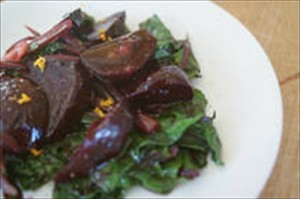Going For Greens
There is a wide array of vegetable seeds available to the home gardener; we all know that from looking through seed catalogs. But, how many of us spend much time in the “greens” section of those catalogs? I know I didn’t get much past the lettuce section. That is until last season when I discovered a wonderful winter soup made with kale. I had seen kale and collards and chard and such in some of the markets, but really did pay much attention to them. But, now I had a reason to learn more about what an ingredient I was using in a new recipe.
In my research I discovered that much like bread, the darker the green the more nutritious they are. Mixing greens, in a salad or slaw, sautéed or in a soup will give you a variety of nutrients adding greatly to the healthiness of your dishes.
I think where the timidity comes in is how to properly cook different greens and finding tasty recipes the family will enjoy, at least it was with me. Cooking greens range from the very tender and quick-cooking spinach to the hearty fibrous varieties of kale. Beet greens and chard can be eaten raw, but take only a few minutes to sauté. Denser greens like kale and collard take a bit longer; you may also want to trim out the stems or ribs before cooking.
When you buy greens at the market or farm stand, be sure to wash them thoroughly. An easy way to do this is to swirl them around in a bowl filled with cold water; then dry them and refrigerate in an airtight container. They will keep for up to 10 days.
The hearty leaves of collard greens give more texture and flavor than spinach, making a great substitute in lasagna. Mustard greens, when added raw to a salad will pack a mustard radish kick. Chard is a colorful green with a mild flavor and works great sautéed in a pasta sauce. For a simple side dish though, quickly sauté in olive oil and garlic.
Beet greens make a good start if you are not accustomed to cooking or eating greens. Beets with their greens attached are one of the great produce deals (two for one!). Beet greens don’t stay fresh for long, so you’ll need to use them within a day or two. Use them as you would chard leaves but note that the greens from red beets will stain anything (including lighter vegetables) a lovely shade of pink. Or use them with the beets they helped grow in this Beet Greens Salad.
I make this salad when I have a bunch of freshly picked beets with vibrant greens. You can serve the salad simply dressed with a bit of olive oil and salt, or add lemon zest, chopped hazelnuts, or feta or goat cheese to dress it up a bit.
Note: Use a high-quality olive oil for drizzling at the end. If you happen to have some orange- or lemon-infused olive oil, this is an excellent time to break it out.
Ingredients:
1 bunch spring beets with greens attached
1 tsp. olive oil
1 clove garlic
1 Tbsp. high-quality extra-virgin olive oil for drizzling (or more to taste)
Kosher or sea salt
Optional Garnishes:
Lemon zest or orange zest
Chopped hazelnuts
Crumbled feta cheese
Goat cheese
Preparation:
Cut off greens from beets. Trim beets. Very young and tender beets can be scrubbed clean, but you will want to peel most beets. Cut beets in half lengthwise, lay cut-side flat and cut into 1/4-inch-thick slices.
Heat a large frying pan over medium heat. Add 1 tsp. olive oil, 1/4 cup water, and beets. Cover and cook until beets are just barely tender, 5 to 10 minutes.
Meanwhile, chop leaves and set aside. Peel and thinly slice garlic
Add garlic to pan, stir until fragrant, about 1 minute. Add beet greens, cover, and cook until wilted, about 1 minute.
Divide warm salad between 4 plates. Spoon any pan liquids evenly over each serving.
Drizzle each salad with olive oil and sprinkle with salt. Add any optional garnishes (lemon zest, orange zest, hazelnuts, feta, goat cheese) that you like.

Recent comments
Aenean nonummy hendrerit mauris. Phasellus porta.